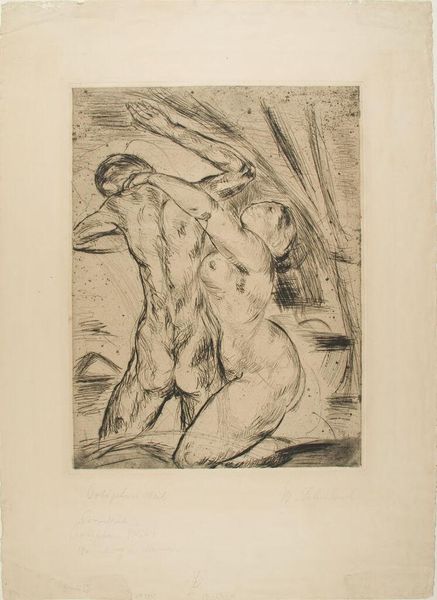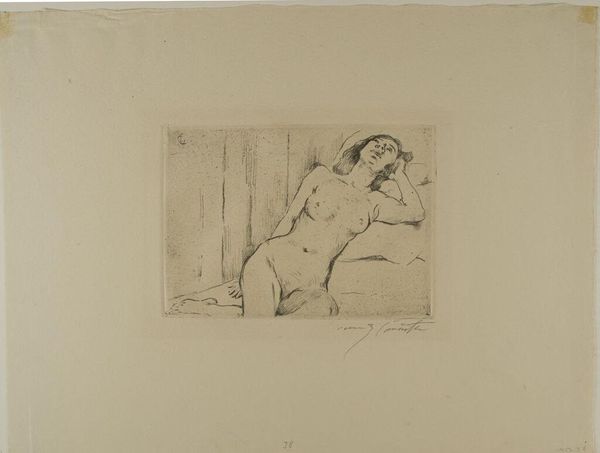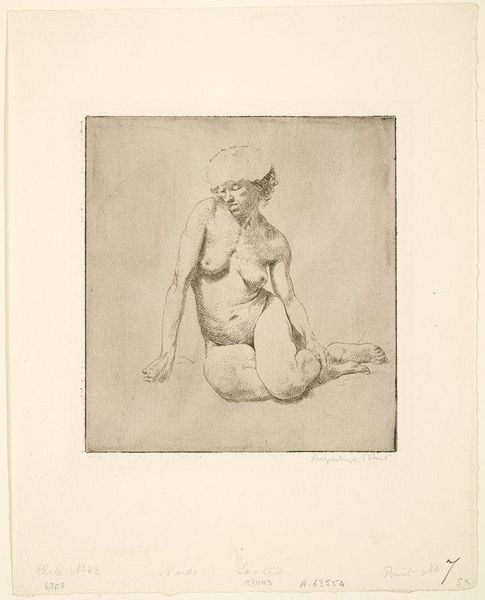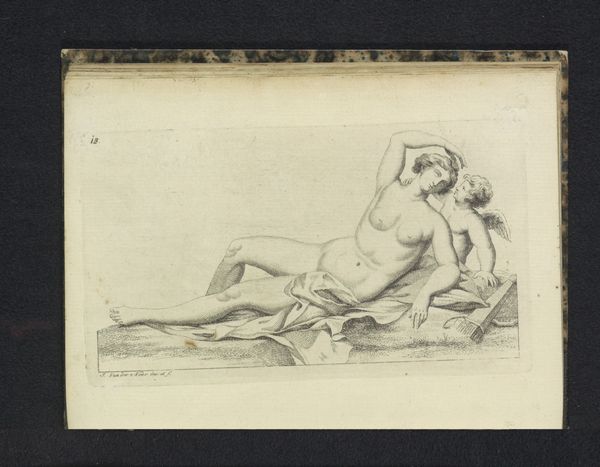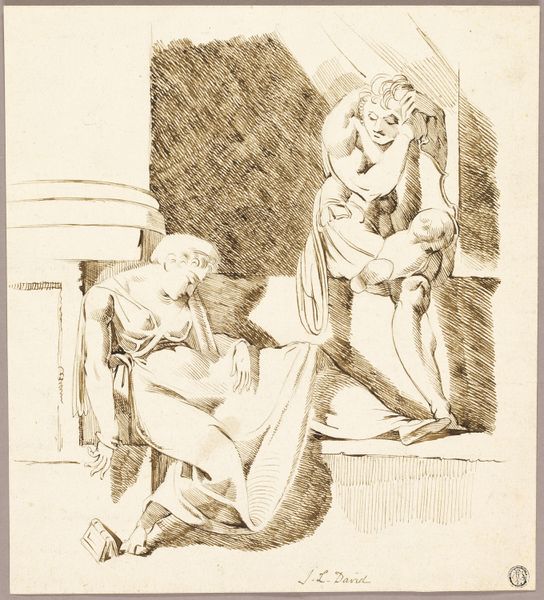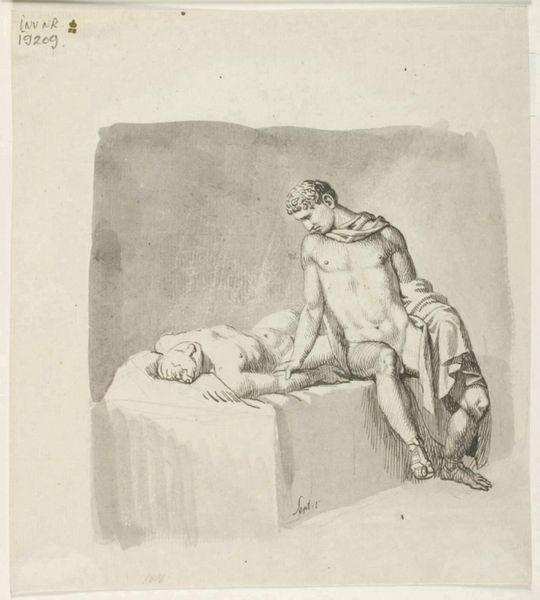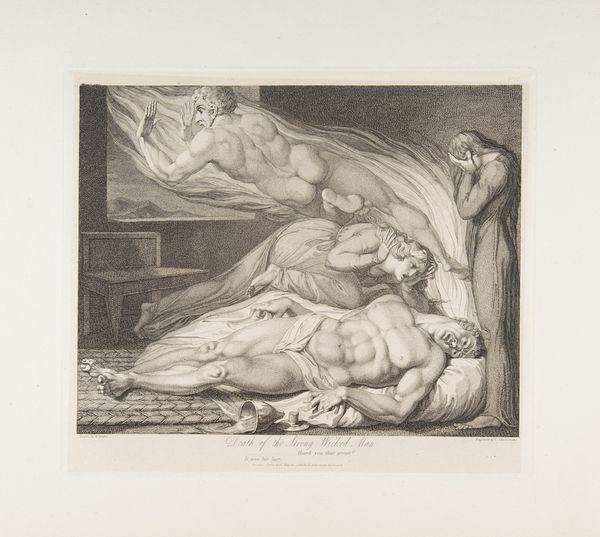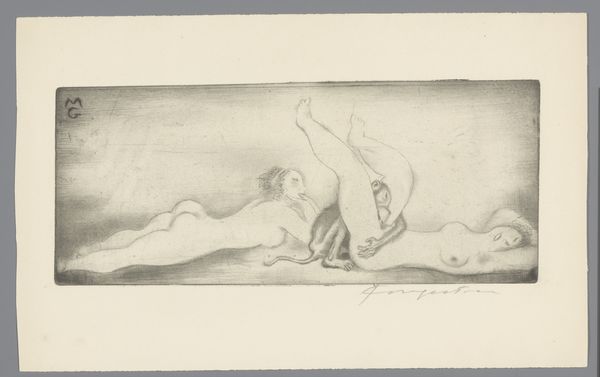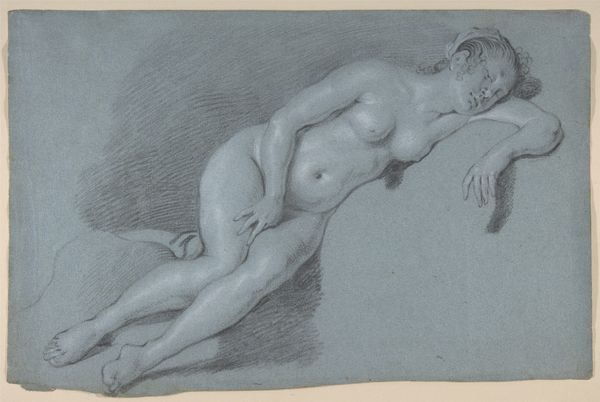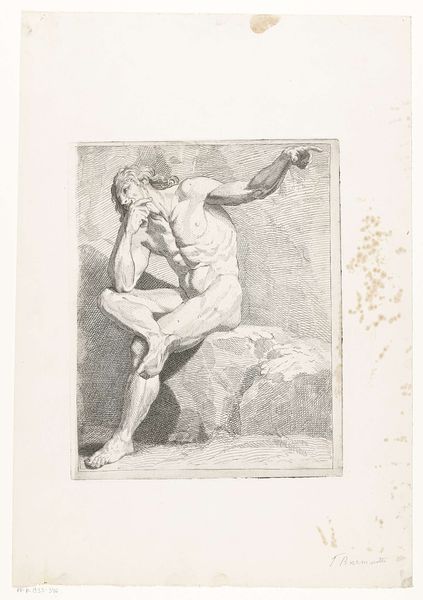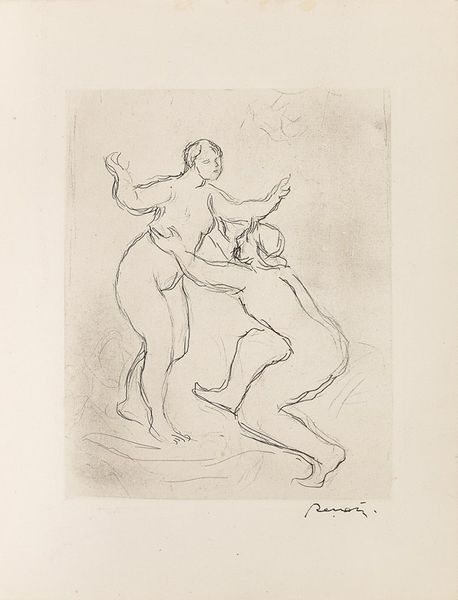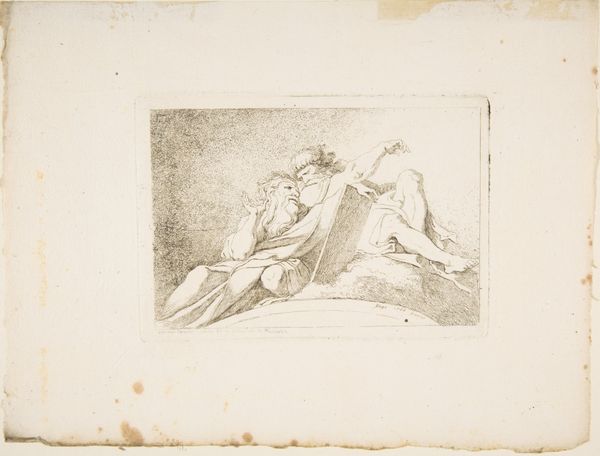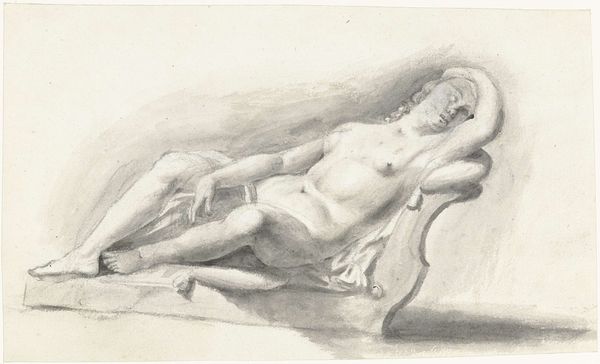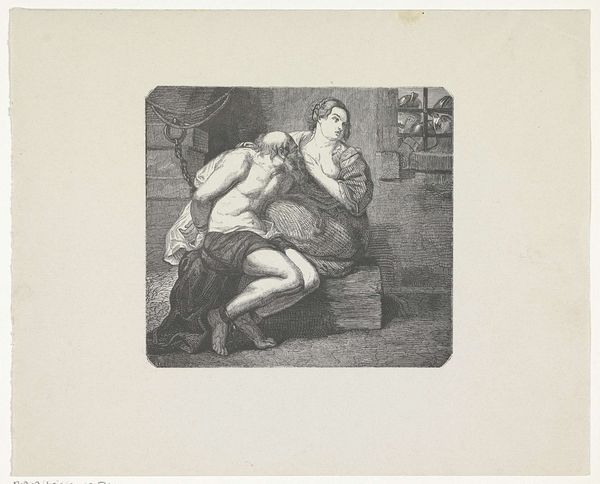
drawing, ink, pen
#
drawing
#
narrative-art
#
baroque
#
figuration
#
ink
#
pen-ink sketch
#
pen
#
history-painting
Dimensions: height 243 mm, width 360 mm
Copyright: Rijks Museum: Open Domain
Curator: This is Moses ter Borch's "Kaïn Doodt Abel," or "Cain Killing Abel," a pen and ink drawing created around 1661. Editor: What immediately strikes me is the stark violence depicted through such delicate, almost ephemeral materials. It’s a chilling contrast. Curator: The medium absolutely contributes to the piece's expressive power. Notice how Ter Borch utilizes varied line weights and washes of ink to suggest volume and create a dramatic sense of light and shadow, even as he depicts such a disturbing scene. Editor: Thinking about Ter Borch's artistic process, it seems significant that he chose a medium so reliant on precise control. Yet, the raw emotion spills out. The hasty strokes lend the figures a visceral, almost frenzied quality. Consider the physical labor involved in the making of this piece. Curator: Exactly. And if you follow the lines and the rendering of space, the composition is quite sophisticated. The figures are positioned dynamically, creating a spiraling effect that leads the viewer’s eye around the scene, heightening the drama and reinforcing the emotional impact of fratricide. Note the almost classical rendering of the nudes, and yet there’s this undercurrent of horror. Editor: Absolutely. And let’s not ignore the broader implications here. Cain, the farmer, versus Abel, the shepherd. A tension embedded in labor itself. Were there socio-economic pressures being manifested in such religious narratives during the baroque period? What was Ter Borch’s workshop like? These works would not spring from a vacuum. Curator: Perhaps. Beyond the socioeconomic elements you brought up, at its heart, I think it is a stark meditation on human nature—on jealousy, rage, and the loss of innocence, captured within the stark simplicity of black ink on paper. Editor: For me, engaging with the materiality of the drawing allows me to consider the implications of representing something so tragic so simply. Perhaps that bareness is intentional. The stark medium demands stark reflection on themes of labor and, in turn, mortality.
Comments
No comments
Be the first to comment and join the conversation on the ultimate creative platform.
